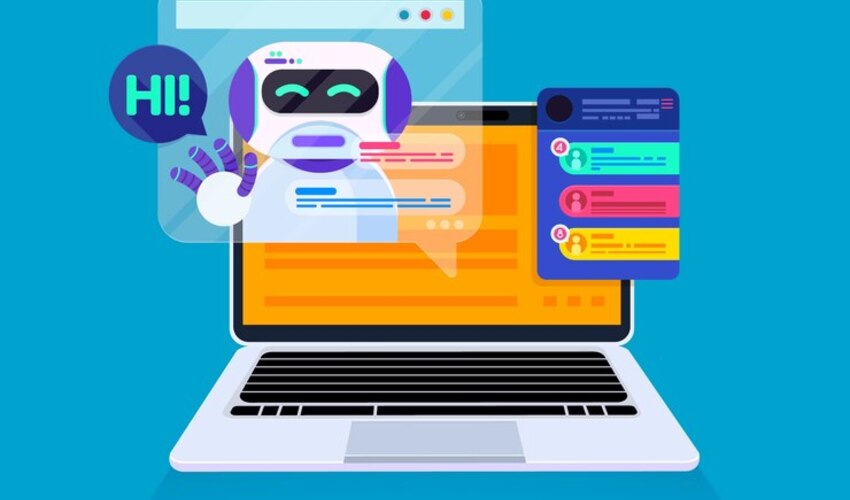Googlebot plays a crucial role in how search engines discover and index content on your website. Understanding how Googlebot download works and how to monitor its performance is essential for maintaining a healthy, search-engine-friendly website. This article breaks down the process and introduces tools to track and optimize Googlebot’s activity on your site.
What Is Googlebot Download?
Googlebot download refers to Googlebot’s process of crawling and retrieving resources from a website.
Googlebot, a web crawler used by Google, visits websites to collect and store content for indexing.
When Googlebot accesses a webpage, it downloads the HTML, images, scripts, and other resources necessary for rendering.
This process helps Google understand the content and relevance of your site for search queries.
How Does Googlebot Download Work?
Step 1: Crawling
Googlebot begins by crawling links found in sitemaps, pages, or external sources.
It prioritizes pages based on their importance and relevance determined by algorithms.
Step 2: Fetching Resources
Once a URL is identified, Googlebot sends a request to the website’s server to fetch its content.
It downloads resources like HTML, CSS, JavaScript, and images needed to render the page.
Step 3: Parsing and Rendering
After downloading, Googlebot renders the page to understand its layout, structure, and dynamic elements.
This process helps Google assess user experience and content quality.
Step 4: Indexing
Finally, Google indexes the downloaded content, making it searchable in Google Search results.
Factors Affecting Googlebot Download Performance
Several factors influence how efficiently Googlebot downloads content from your website:
a. Website Speed
Slow-loading pages can delay or limit Googlebot’s ability to crawl your site effectively.
b. Server Response Time
A slow server increases the time Googlebot spends fetching resources, reducing crawl efficiency.
c. Crawl Budget
Google allocates a specific crawl budget to your website, determining how many pages it will crawl.
d. Robots.txt Configuration
Blocking Googlebot through improper robots.txt settings can prevent certain pages from being crawled or downloaded.
e. Page Size and Resource Complexity
Larger pages with numerous resources take longer to download and process.
Why Monitor Googlebot Download Performance?
Monitoring Googlebot download helps identify crawling issues that may impact indexing and search rankings.
It ensures Googlebot can access all important pages and resources without encountering errors.
Regular monitoring helps diagnose server issues, broken links, and misconfigured sitemaps.
Top Tools to Monitor Googlebot Download Performance
a. Google Search Console
Google Search Console is a free tool that provides insights into how Googlebot interacts with your site.
-
Features: Crawl stats, indexed pages, and error reports.
-
How It Helps: Tracks Googlebot activity, crawl errors, and download speed.
b. Screaming Frog SEO Spider
Screaming Frog mimics Googlebot to crawl your site and identify potential issues.
-
Features: Checks for broken links, missing metadata, and large page sizes.
-
How It Helps: Highlights areas that might slow Googlebot download performance.
c. Ahrefs Site Audit
Ahrefs offers an in-depth website audit feature to analyze crawlability and technical SEO issues.
-
Features: Monitors broken pages, response times, and crawl depth.
-
How It Helps: Provides actionable insights to improve Googlebot’s download experience.
d. SEMrush Site Audit Tool
SEMrush helps monitor your site’s performance and crawl issues in real-time.
-
Features: Tracks crawl budget, duplicate content, and slow-loading pages.
-
How It Helps: Ensures all key resources are accessible to Googlebot.
e. DeepCrawl
DeepCrawl specializes in identifying technical SEO issues that affect crawling and indexing.
-
Features: Checks internal links, response codes, and server performance.
-
How It Helps: Improves the visibility of important pages in Google Search.
Best Practices for Optimizing Googlebot Download Performance
a. Improve Page Speed
Optimize images, minify CSS/JS files, and use a Content Delivery Network (CDN) to speed up page loading.
b. Check Server Health
Ensure your server can handle Googlebot requests efficiently without timing out or slowing down.
c. Optimize Sitemaps
Create and submit XML sitemaps with updated links to help Googlebot prioritize important pages.
d. Use Robots.txt Wisely
Block unnecessary pages like admin panels or duplicate content, but allow access to critical resources.
e. Monitor Crawl Budget
Limit crawl budget wastage by fixing broken links and avoiding unnecessary URL parameters.
Common Issues in Googlebot Download and How to Fix Them
a. Server Errors (5xx)
These errors indicate server issues that prevent Googlebot from downloading content.
-
Fix: Upgrade server resources or fix misconfigurations to handle requests.
b. Page Not Found (404)
Broken links lead to a poor user experience and wasted crawl budget.
-
Fix: Redirect broken links to relevant pages or fix the links.
c. Blocked Resources
If robots.txt blocks CSS, JavaScript, or images, Googlebot cannot render the page correctly.
-
Fix: Update robots.txt to allow access to essential resources.
d. Duplicate Content
Duplicate pages waste crawl budget and confuse search engines.
-
Fix: Use canonical tags to direct Googlebot to the preferred version of a page.
Benefits of Monitoring Googlebot Download Regularly
Regular monitoring ensures:
-
Improved crawl efficiency and faster indexing of new content.
-
Better understanding of technical SEO issues.
-
Enhanced user experience by addressing crawl errors promptly.
How Googlebot Download Impacts SEO
Efficient Googlebot download is critical for ensuring your website ranks well in search results.
When Googlebot accesses and indexes your content seamlessly, it improves your visibility and relevance for target keywords.
Conclusion
Understanding Googlebot download and monitoring its performance are essential for maintaining a search-friendly website.
Using tools like Google Search Console, Screaming Frog, and SEMrush ensures Googlebot can access and index your content efficiently.
By optimizing your site for Googlebot, you improve your chances of ranking higher in search results while providing a better user experience.
FAQs: How Googlebot Download Works in 2024
Q1: What is Googlebot download, and why is it important?
Googlebot download refers to the process where Googlebot fetches and downloads website resources like HTML, CSS, and JavaScript. It ensures content is indexed and searchable on Google.
Q2: How has Googlebot download evolved in 2024?
In 2024, Googlebot has improved efficiency, focusing on mobile-first indexing, rendering dynamic content better, and supporting updated web technologies.
Q3: How does Googlebot handle JavaScript-heavy websites?
Googlebot processes JavaScript more efficiently now, rendering pages dynamically to understand content and layout accurately.
Q4: How can I check Googlebot’s activity on my website?
Use tools like Google Search Console, where you can view crawl stats, monitor errors, and analyze Googlebot’s interactions with your site.
Q5: Does Googlebot download all pages of a website?
No, Googlebot prioritizes pages based on crawl budget, page importance, and user engagement metrics like click-through rates.
Q6: What is a crawl budget, and how does it impact Googlebot downloads?
A crawl budget is the number of pages Googlebot can or will crawl within a given timeframe. Optimizing it ensures critical pages are crawled frequently.
Q7: How does mobile-first indexing affect Googlebot downloads?
In 2024, Googlebot prioritizes the mobile version of your website for crawling and indexing, emphasizing mobile usability and speed.
Q8: What tools can help monitor Googlebot download performance?
Popular tools include Google Search Console, Screaming Frog SEO Spider, Ahrefs, SEMrush, and DeepCrawl for real-time tracking and analysis.
Q9: What should I do if Googlebot cannot access some resources?
Ensure critical resources like CSS, JavaScript, and images are not blocked by robots.txt or server permissions.
Q10: How can I improve Googlebot’s download efficiency on my site?
Optimize page speed, reduce server response times, fix broken links, and ensure a clear sitemap for better crawl prioritization.
Q11: Does Googlebot download impact SEO rankings directly?
Yes, efficient downloads ensure all critical content is indexed, affecting search rankings positively by improving visibility and relevance.
Q12: How can I troubleshoot crawl errors reported by Googlebot?
Identify errors in Google Search Console under Crawl Stats, and fix issues like 404s, 5xx server errors, or blocked resources promptly.
Q13: What is the role of robots.txt in Googlebot downloads?
Robots.txt guides Googlebot on which pages or resources to crawl or avoid, impacting crawl budget and efficiency.
Q14: Can Googlebot download affect page speed metrics?
Yes, slow-loading pages can increase crawl time, reducing the efficiency of Googlebot’s downloads and affecting user experience metrics.
Q15: How often does Googlebot crawl a website?
Crawling frequency depends on factors like website size, update frequency, and Google’s perception of the site’s importance.
Q16: What happens if Googlebot encounters duplicate content?
Googlebot may index only one version of duplicate pages, potentially lowering visibility for the others. Use canonical tags to guide indexing.
Q17: Does Googlebot download support HTTP/2?
Yes, in 2024, Googlebot supports HTTP/2, enabling faster downloads and reduced server resource usage.
Q18: How do sitemaps influence Googlebot downloads?
Sitemaps provide Googlebot with a structured map of important pages, improving crawl prioritization and efficiency.
Q19: Are there limitations to Googlebot downloads?
Yes, limitations include server restrictions, crawl budget, and resource-heavy pages that slow down the process.
Q20: How do I know if Googlebot has downloaded my latest content?
Use Google Search Console’s URL Inspection tool to check the crawl status and indexing of updated pages.
These FAQs reflect the latest updates and best practices for managing Googlebot download in 2024, ensuring efficient crawling and indexing for better SEO performance.
Read Dive is a leading technology blog focusing on different domains like Blockchain, AI, Chatbot, Fintech, Health Tech, Software Development and Testing. For guest blogging, please feel free to contact at readdive@gmail.com.





